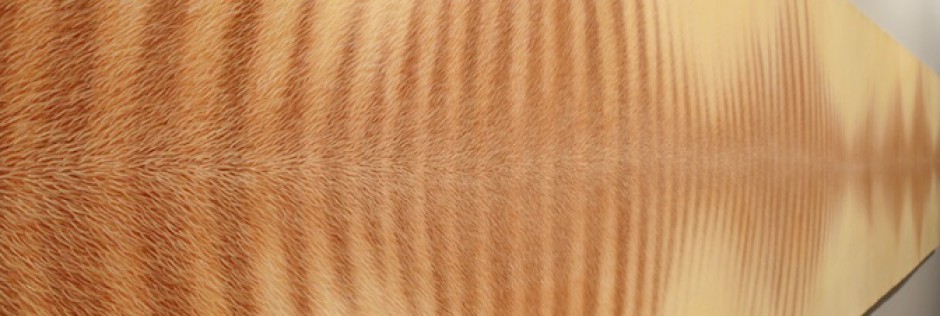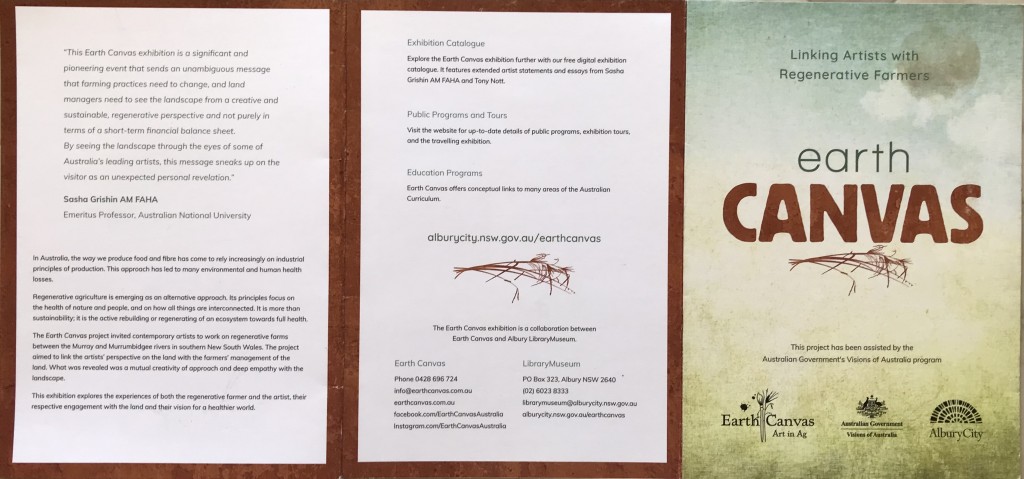The Earth Canvas exhibition has been touring regional galleries through out Victoria and New South Wales. There are seven core artists involved in the exhibition who were connected to regenerative farms.Rosalind Atkins – Wearn Family at Yammacoona, Little Billabong, Jo Davenport – Austin Family at Mundarlo, Mundarlo, Jenny Bell – Couglan Family at Mt Nara Narra, Holbrook, Idris Murphy, the Goghlan Family at Erimbla, Gerogery, John Wolseley – Gillian Sandbrook at Bibbaringa, Bowna, Janet Laurence – Rebecca Gorman and Family at Yapbtree West, Mundarlo and Tony Nott
At each regional location a local artist is invited to participate in the exhibition and is connected to a local regenerative farm. I was invited to participate in the exhibition at Mildura Arts Centre and was connected to Food Next Door who also administers the Out of the Box project
“Food Next Door matches under-utilised farmland with landless farmers to support small-scale regenerative farming, growing diverse crops & engaging people from diverse backgrounds to supply food to local households”.

Looking at the Overlooked, installation view at Mildura Arts Centre. Pastel and coloured pencil on paper, 70h x 250w cm
I met with the farmers Joselyn Majambere and Joel Sindayingaya from the Burundian community and in particular Peter Webb, the Grower’s Mentor who worked on returning the land to its organic and biodynamic state. In speaking with Peter Webb I connected to the regeneration of the soil and the removal of chemicals which meant that many of the insects were returning to the earth and in particular the earth worms. I became really interested in how important the small things are to balance and nurture in the process of organic farming.
Artist Statement for Earth Canvas – Born in Mildura to Italian immigrant parents, artist Filomena Coppola’s practice extends from large pastel drawings to detailed miniatures through which she explores issues of cultural identity, place, connection to the feminine, mother earth and matriarchal lore.
Inspired by the work of Food Next Door and their connection with the Burundian and Congalese farmers who have added a new cultural richness to the Mildura region through food production, an aspect which is reflected in the Italian community of Mildura. The regenerative farming practices inspired Filomena to explore the complexity and richness that is returned to the land when farming and nature find equilibrium.
The farmers connect to the land as they nurture, sow care for and harvest produce, they sing; connecting to each other, the land, plants and animals. Her work Looking at the Overlooked explores natures response, beneath the wings of a bee we find butterflies, grasshoppers, lady beetles, dragon flies, cidadas and the important earthworm signifying health, balance, nature celebrating and being nurtured.
From the Earth Canvas catalogue – “In Australia, the way we produce food and fibre has come to rely increasingly on industrial principles of production. This approach has led to many environmental and human health losses.
Regenerative agriculture is emerging as an alternative approach. Its principles focus on the health of nature and the people, and on how all things are interconnected. It is more than sustainability; it is the active rebuilding oor regenerating of an ecosystem towards full health.
The Earth Canvas project invited contemporary artists to work on regenerative farms between the Murray and Murrumidgee rivers in southern New South Wales. The project aimed to link the artist’ perspective on land with the farmers’ management of the land. What was revealed was a mutal creativity of approach and deep empathy with the landscape.
This exhibition explores the experiences of both the regenerative farmer and the artist, their respective engagement with the land and their vision for a healthier world”.


